Succession Ceremony
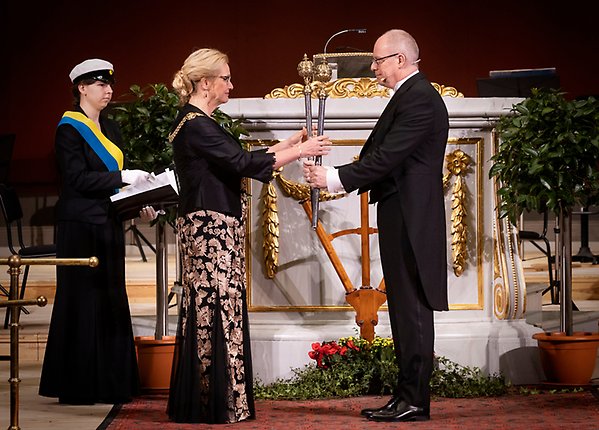
The former Vice-Chancellor Eva Åkesson and her successor Anders Hagfeldt.
The Succession Ceremony marking the transfer of the office of Vice-Chancellor at Uppsala University has hardly changed over the centuries. The old Vice-Chancellor still hands over the same objects to their successor: the sceptres, the seal, the Vice-Chancellor’s chain of office, the keys, the oldest student register and the University’s charters from 1655.
In bygone days, the new Vice-Chancellor received real keys – to the treasury, the archive and the prison. These days, the keys are symbolic. They are gilded and date back to the days of King Gustaf III in the late 18th century. The new Vice-Chancellor now uses an access card, of course, but the symbols and ceremony live on, more so at Uppsala University than at any other Swedish university.
Though the tradition has a long history, it has evolved over the years. Originally, the holder of the office of Vice-Chancellor changed much more frequently. Until the mid-19th century, a new Vice-Chancellor took office each semester. As there were only about 25 professors at that time, nearly everyone served as Vice-Chancellor at least once. At that time, the ceremony was also far simpler and lacked much of the pomp and circumstance that characterises it today.
For a long time, the ties with the Church were strong, and all succession ceremonies for Vice-Chancellors took place in the Cathedral. After all, the Archbishop was the Pro-Chancellor and part of the University leadership up to 1910.
In the 19th century the Chancellor played a greater role in running the University than the Vice-Chancellor. The Chancellor was appointed by the king and the government following nomination by the University, and up to 1857 the assignment normally went to the Crown Prince.
In other words, the University was governed by the Crown Prince and the Archbishop, whereas the role of the Vice-Chancellor was to manage practical matters, such as correspondence. This was the order of things up to the end of the 19th century, when the Chancellor acquired a different role, at national level. The Vice-Chancellor became more powerful and was appointed for longer periods.
The changed role of the Vice-Chancellor is also reflected in the ceremony. Nowadays the incoming Vice-Chancellor usually delivers an address looking to the future, whereas in the 19th century the outgoing Vice-Chancellor spoke about his time in office. This speech tended to be a rather dry account of who had been appointed, who had died, and other events during the year.
The insignia of the Vice-Chancellor’s office
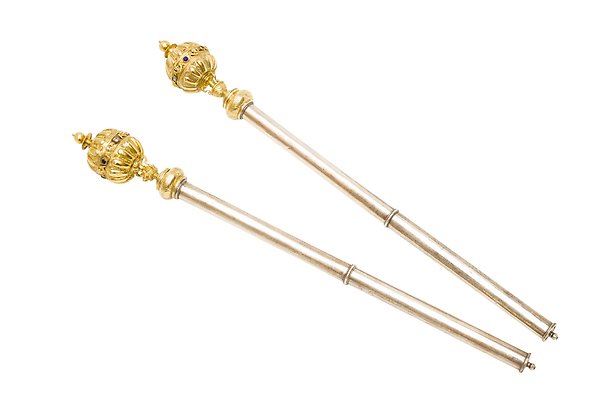
Uppsala University has two sceptres. The oldest was already in use at the Conferment Ceremony on 22 January 1600, the other was made a few years later. The Uppsala University sceptres are actually Sweden’s oldest preserved academic ritual objects.
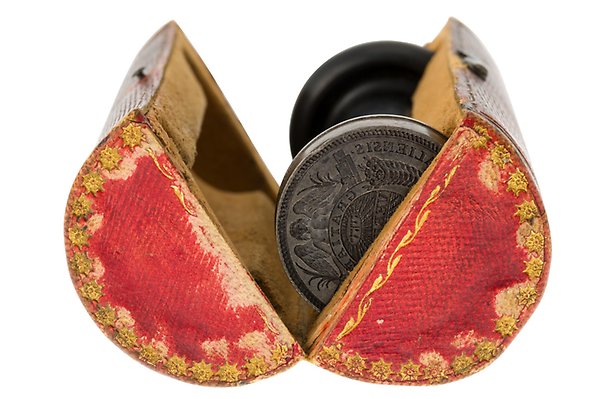
The University’s seal bears the Latin inscription ‘Gratiae veritas naturae’. This can be translated as ‘Truth through (divine) grace and nature’. The University began to use the seal in the mid-17th century. In time, it became worn and was replaced by a new seal in the late 18th century. The new seal from the 18th century is the one handed over at the Succession Ceremony.

In the past, the new Vice-Chancellor received real keys to the treasury, the archive and the prison. At that time the University had its own court with the right to judge students, employees and their servants. The two keys that the outgoing Vice-Chancellor hands over to the new incumbent are now symbolic. They are gilded and date from the 18th century.
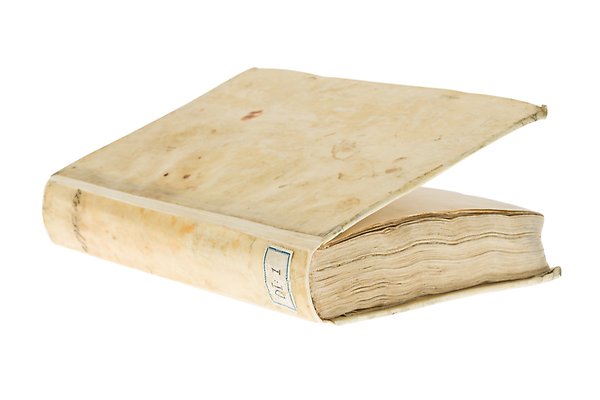
One of the books the outgoing Vice-Chancellor hands over is the oldest volume of the student register Album studiosorum from the end of the 16th century. It symbolises the students.
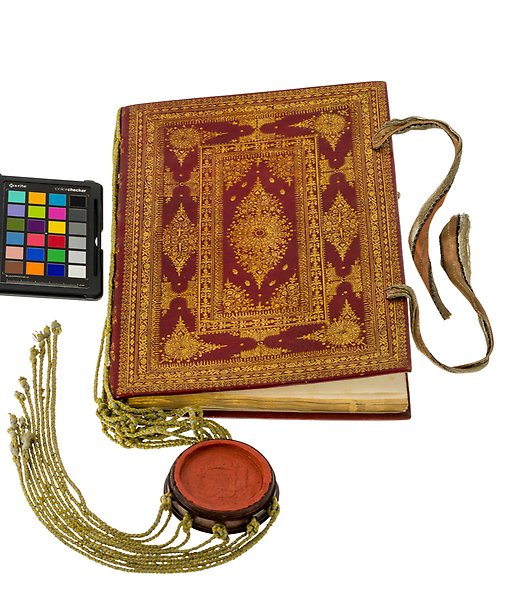
The other book the new Vice-Chancellor receives contains the 1655 Charters. It symbolises the legal foundation on which the University rests.
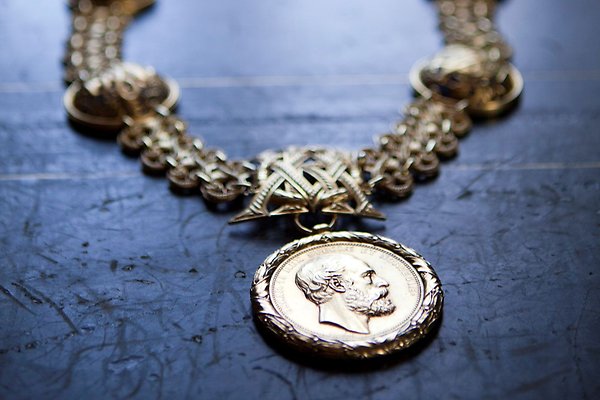
The Vice-Chancellor’s chain of office was a gift to the University from King Oscar II on the occasion of the University’s 400th anniversary in 1877. The medallion depicts the donor. The chain includes four faculty symbols that also serve as links, one for each of the faculties that existed at the University in 1877: the Faculty of Theology, the Faculty of Law, the Faculty of Medicine, and the Faculty of Philosophy.
